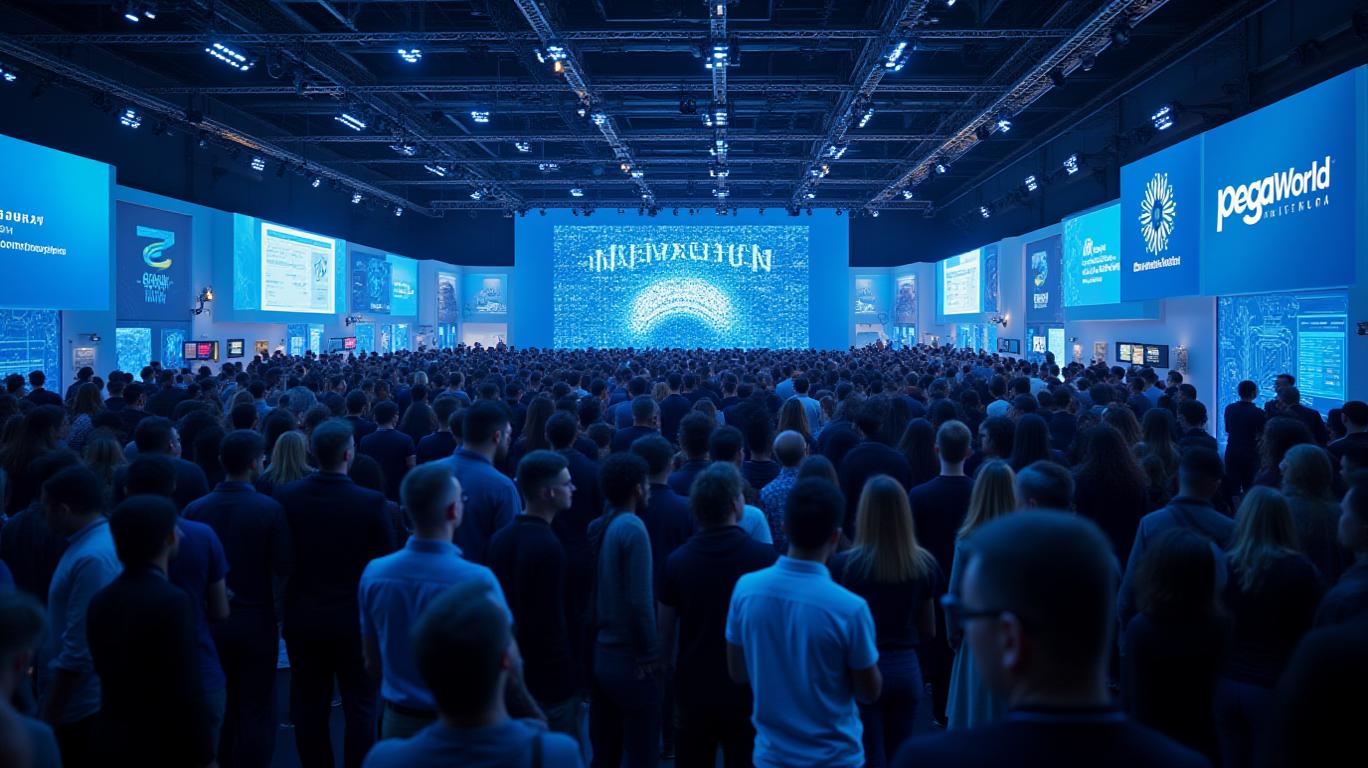Pega's GenAI Strategy Fuels Explosive Growth in Q1 2025
Pegasystems (NASDAQ: PEGA) has emerged as a force in the AI-driven enterprise software sector, with its Q1 2025 results showcasing how its GenAI solutions are unlocking new levels of financial performance. The quarter’s metrics—driven by accelerated customer adoption of AI-powered platforms—paint a picture of a company poised to capitalize on the shift toward cloud-native, intelligence-infused business systems.
Financial Momentum: Cash Flow and ACV Surge
Pega’s Q1 2025 report highlights a robust financial foundation. Operating cash flow hit $204 million, while free cash flow reached $202 million, reflecting strong execution against its “Rule of 40” strategy, which balances growth and profitability. The 13% YoY rise in Annual Contract Value (ACV), including a 23% jump in Pega Cloud ACV, underscores the growing demand for its cloud-based AI solutions.
This momentum is particularly striking given that the same period last year saw only 9% ACV growth. The subscription model, central to Pega’s strategy, is delivering predictable revenue streams, with backlog—future revenue from existing contracts—up 21% YoY, hitting a record high. This metric suggests sustained client commitment to Pega’s GenAI-driven platforms, which integrate seamlessly with legacy systems to modernize workflows.
GenAI as the Growth Catalyst
The star of Pega’s Q1 performance is its GenAI product suite, which CEO Alan Trefler credits with “dramatically transforming how we engage with clients.” Key innovations include:
- Pega GenAI Blueprint: Automates application design, slashing development cycles by 50% for clients like T-Mobile, which uses it to streamline customer service workflows.
- Socrates: A generative AI tutor for corporate training, reducing onboarding costs and accelerating employee productivity.
These tools are not just cost savers; they’re revenue drivers. By embedding GenAI into its core offerings, Pega is attracting high-profile clients such as the UK’s HMRC, which relies on its AI decisioning systems to manage tax processes in real time.

Partnerships with cloud giants like AWS and Google Cloud further amplify Pega’s reach, enabling enterprises to deploy GenAI solutions at scale.
Strategic Positioning: Enterprise Transformation Leader
Pega’s differentiation lies in its “Enterprise Transformation” vision, which combines AI decisioning, workflow automation, and legacy system modernization. This holistic approach addresses a critical pain point for enterprises: balancing innovation with operational stability.
Analysts have noted Pega’s ability to “future-proof” client investments, as seen in its 21% YoY backlog growth. This is a strong indicator of long-term revenue visibility, especially as competitors struggle to match Pega’s integration of AI into core business processes.
Risks and the Road Ahead
Despite the positives, Pega faces challenges. Ongoing litigation with Appian Corp. and foreign currency fluctuations (notably in the UK and Europe) could pressure margins. However, Pega’s non-GAAP metrics—excluding one-time costs—reveal a core business thriving under GenAI’s tailwinds.
Investors should also note the stock’s recent dip (10.5% decline in the prior month), which has created a potential buying opportunity.
Conclusion: A Strong Case for Long-Term Growth
Pega’s Q1 2025 results are a testament to the power of GenAI in enterprise software. With 23% cloud ACV growth, a 21% backlog surge, and partnerships that expand its reach, the company is well-positioned to capitalize on the $100 billion+ AI-driven enterprise software market.
Analysts’ average price target of $96.73—nearly 44% above current levels—reflects confidence in Pega’s ability to sustain growth. Even with near-term risks, the Rule of 40 framework ensures Pega prioritizes both profitability and expansion.
For investors seeking exposure to AI’s enterprise revolution, Pega’s blend of proven financial metrics and transformative AI capabilities makes it a compelling play. The data is clear: this is not just a quarter of growth, but a signal of Pega’s enduring dominance in redefining how businesses operate in the AI era.


_442a2dcc1749832873286.jpeg)
_e68fac6d1749831664430.jpeg)








